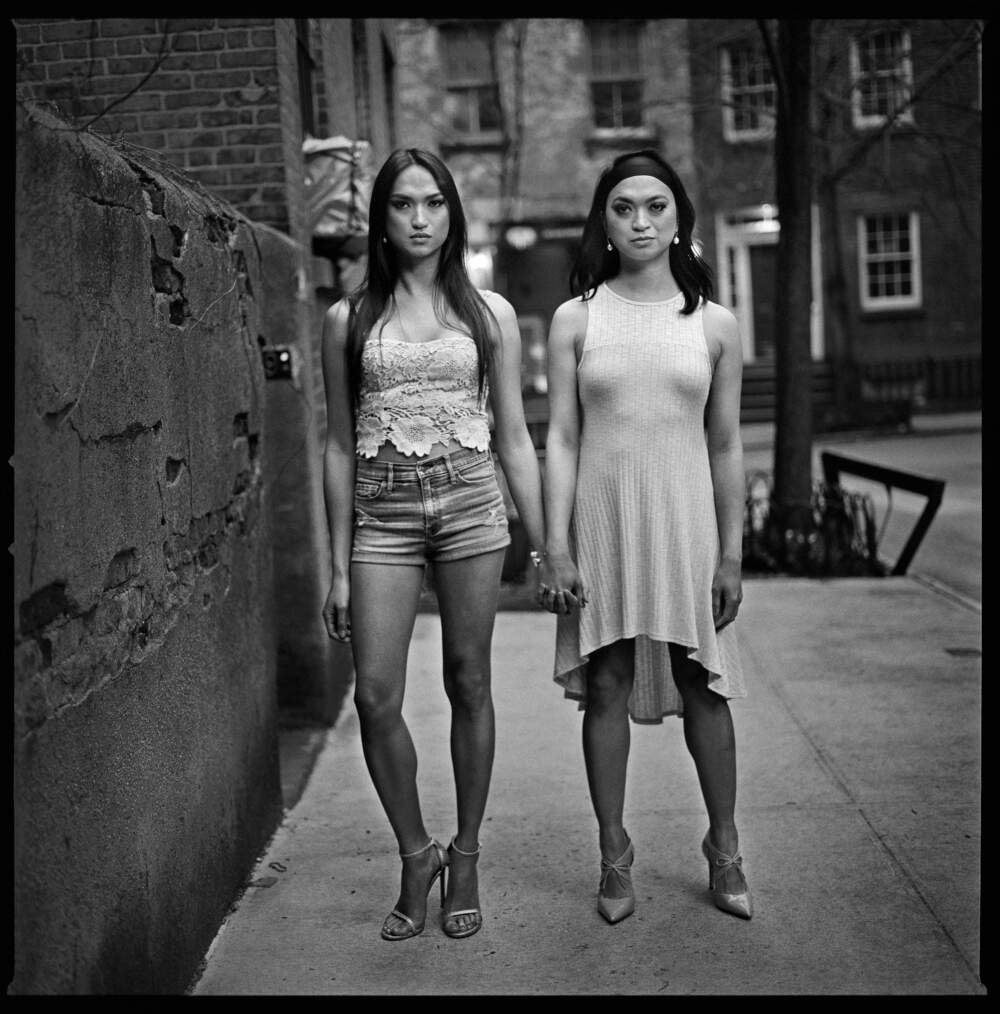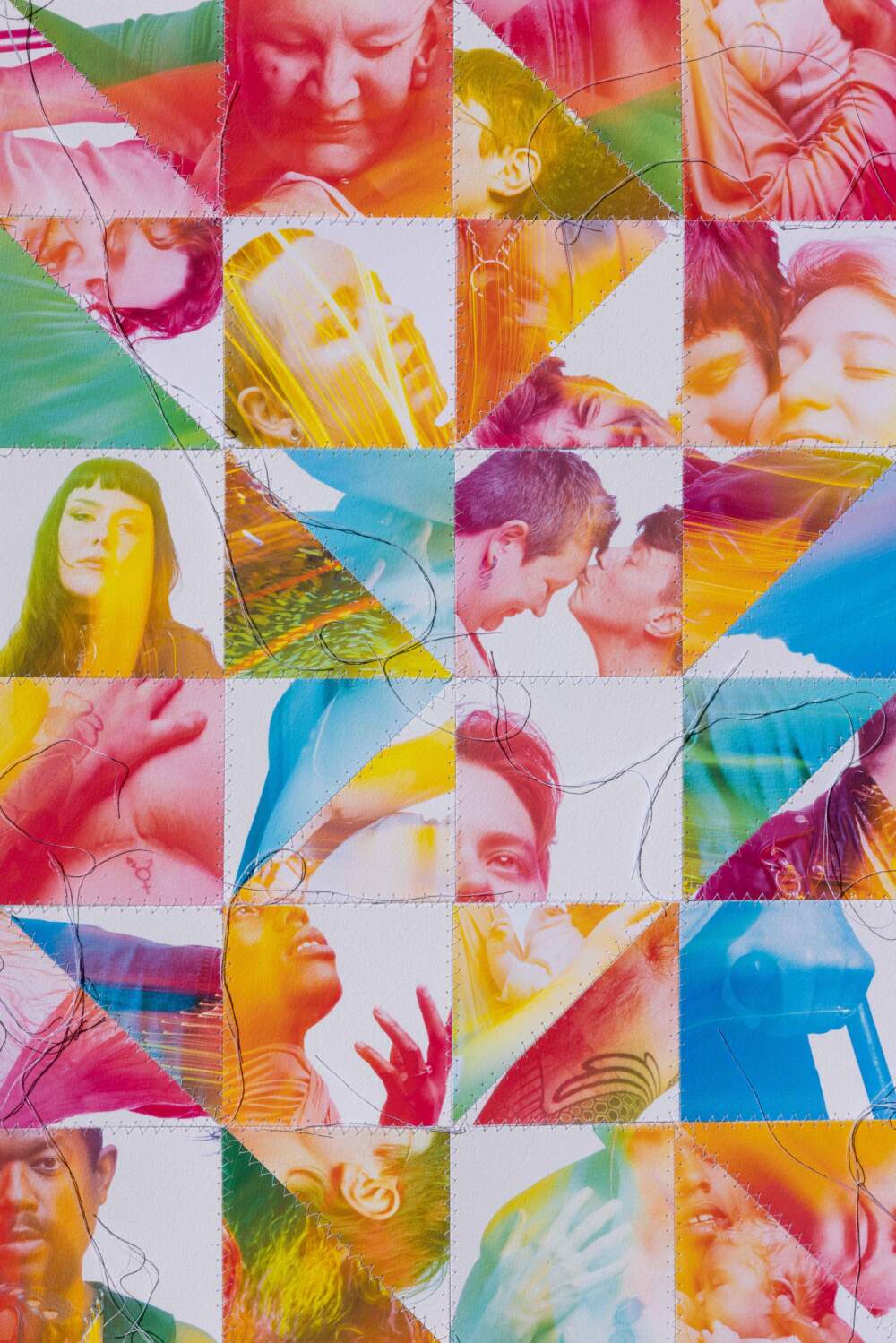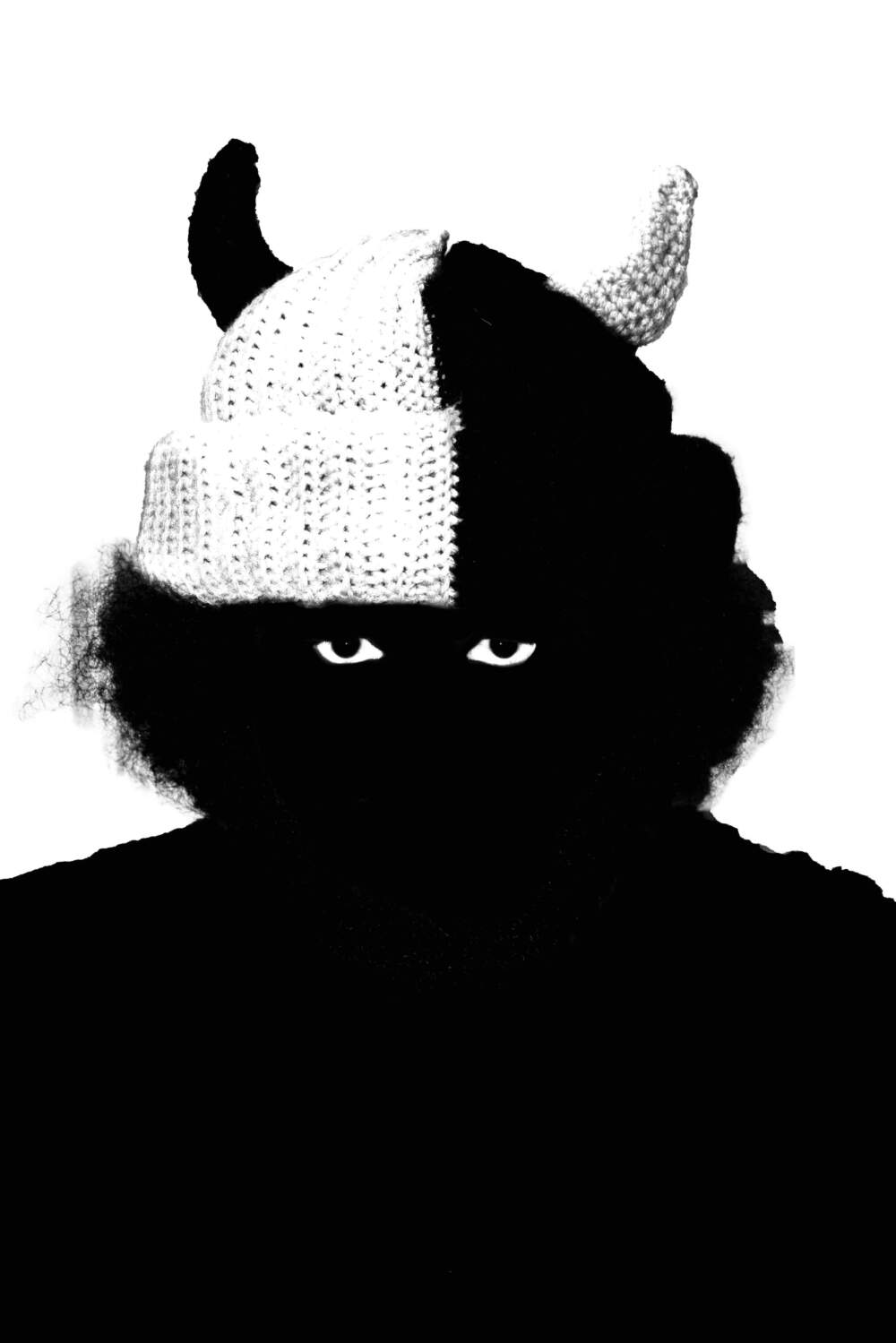Advertisement
Field Guide to Boston
Found family and a celebration of queer identity in 'Portraits From Boston, With Love'

Walking into the Isabella Stewart Gardner Museum’s opulent courtyard, past her luscious garden and into the small Fenway Gallery, visitors are greeted by three walls of deeply personal declarations of identity. Through vibrant color trails, dark silhouettes and bursts of gold, three Boston-based artists investigate what it means to be queer, find community and self-love and celebrate that exploration. It is also the place where a security guard told curator Adrienne Chaparro that a mother entered with a young transgender girl and expressed how happy and proud she was to have a daughter.
“I think stuff like that just makes me feel like we are achieving what we need to achieve,” Chaparro said from the gallery.
“Portraits From Boston, With Love” opened at the Gardner during Pride Month on June 13 and runs through Sept. 8 with photographs by Ally Schmaling, Olivia Slaughter and Jaypix Belmer. It is the companion exhibition to “On Christopher Street: Transgender Portraits by Mark Seliger,” a show brought over from the Memphis Brooks Museum of Art featuring striking black and white photographs of individuals from the transgender community in New York City. Hakeem Adewumi, a previous artist-in-residence at the Gardner, is also showing “Possession of a Recalcitrant Dream,” a fantastical self-portrait on the exterior of the museum.

Seliger’s work features sisters Angel and Ally Castillo, who came out as transgender together through their photograph, and actress Hari Nef who played Dr. Barbie in Greta Gerwig’s 2023 feature “Barbie,” among other roles. While this collection had been shown before, Chaparro and designer Siena Scarff decided on additional details that expanded upon the showcased LGBTQIA+ history like archival documents from gay friends of Gardner and the use of a typeface called Marsha. The lettering is based on a sign that used to hang outside of the Stonewall Inn, a gay bar on Christopher Street where the 1969 Stonewall Uprising took place. The typeface is named after activist Marsha P. Johnson, a Black transgender woman who played a key role in the uprising and was also a prominent advocate in the LGBTQIA+ community.
“Portraits From Boston, With Love” showcases a similar unabashed presentation of identity, although the artists have an insider perspective as queer and nonbinary individuals.
Schmaling’s work begins on the left wall with a colorful gradient of orange and pink hues. They describe themself as an “interdisciplinary maximalist” and utilize color and light as a vessel to explore fluidity in photographing themself and their close friends.

“I think so much of queer and trans representation can be pretty one-dimensional in a way that is like — it's just queer joy or trans joy, or it's a sob story,” said Schmaling. “I really feel dedicated to preserving and honoring the fullness of all those identities and the expansiveness of living in a queer body, living in a trans body.”
They explained that the yellow, blue, pink and green colorway represents the “expansiveness of queer and transness” and the bursting life that exists outside of the heterosexual, metaphorical box people are put in.
The wall shifts to stark white for Slaughter’s black and white shadowy silhouettes. They were an artist-in-residence at the Gardner in January 2024 where they developed photographs of their chosen family in a series called “For Those Who Dare To See.” Slaughter shot the portraits on a DSLR with high contrast and after printing the images, they covered the subjects in black paint. They were inspired by cameo portraiture, which often featured wealthy white people due to accessibility, resources and a long history of racial bias against dark skin in photography. For Slaughter’s portraits, they depicted Black and brown individuals they hold dear.
Advertisement

“I started toying with this idea of when we're feeling most unlovable, the people who love us through our darkest times and how those dark spots end up being like pieces of light and beacons of joy for the people around us,” Slaughter said. “I wanted to make sure that we’re also getting this glimpse of uplifting and strong Black people.”
On the final wall, golden hands, a camera and a face emerge from black backgrounds. Belmer began their series “Future Leaders and Builders” as performance art, spray painting themself gold, going out in public under a new persona as the Gold Member and pretending to take photos of people to get their reactions. They then took photographs of themself as this golden individual, luminous and proud. Belmer initially wanted people to feel seen by their camera. In turn, they found self-love in their portraits.

“I figured [out] how to manifest my greatness, how to believe in my state of peace, my golden light, how to know that I am powerful and believe that I'm powerful,” Belmer said. “This was my way of showing myself love, care and also self-love for other people, because I love photography, and I want people to be reflected in their golden essence.”
A “Community Voices Phone” by Crystal Bi sits in the corner of the room. Visitors can hold the phone to their ear and listen to messages from artists and sitters depicted around the room. They answer the question, “Where do you feel like your fullest self?”

In keeping with this idea, Chaparro saw her role in the exhibition as more of a facilitator than a curator, giving the artists the freedom to express themselves completely.
“We have self-portraiture, we have portraits of chosen family in this very striking, geometric way and then we have Ally's work of portraits of their friends and family and people who are maybe outside of that, but who they really admire, and has done it in this really colorful, wonderful, joyful way,” Chaparro said. “What we felt we created was a really potent, powerful space.”
“Portraits From Boston, With Love” is on view at the Isabella Stewart Gardner Museum through Sept. 8.
Correction: A previous version of this story incorrectly identified the museum that curated the photographs by Mark Seliger. The exhibition was curated by the Memphis Brooks Museum of Art.
